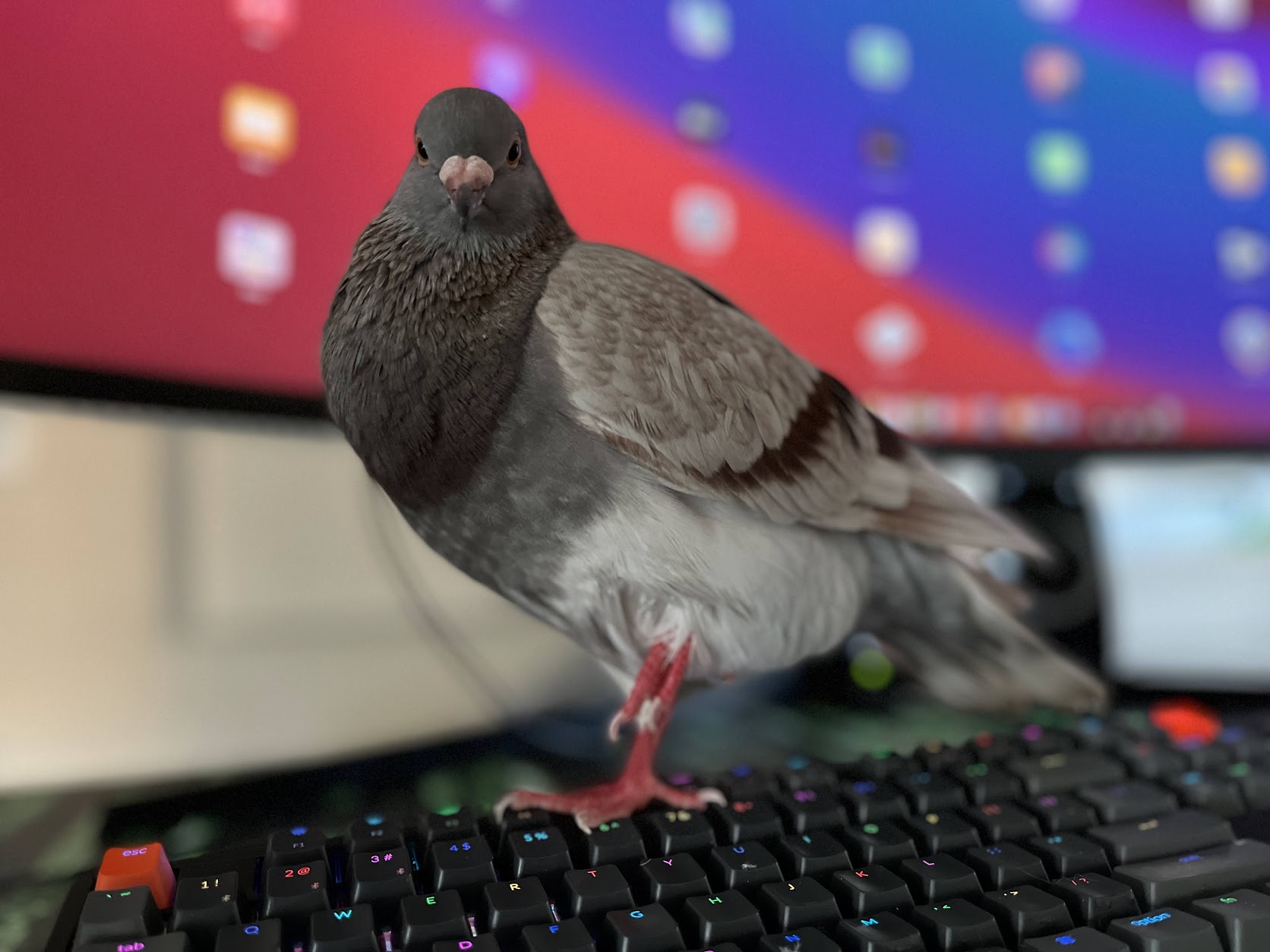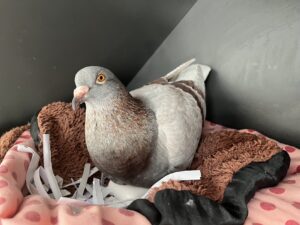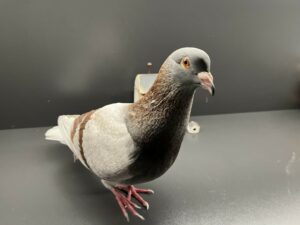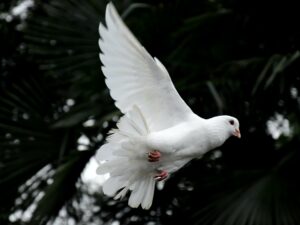If you’ve ever spent time around pigeons, you’ve probably noticed that they have a habit of standing on one leg.
It’s something that’s always fascinated me, especially since I have my own rescued pigeon at home.
I’ve always wondered why they do it, and I’ve heard a few different theories over the years. Some people say it’s to conserve heat, while others think it’s a way to keep a lookout for predators.
Still, others believe it’s just a natural posture for these birds. So what’s the real reason?
In this article, we’ll explore the various theories behind this behavior and see what the scientific evidence has to say. Let’s dive in!
JUMP TO:
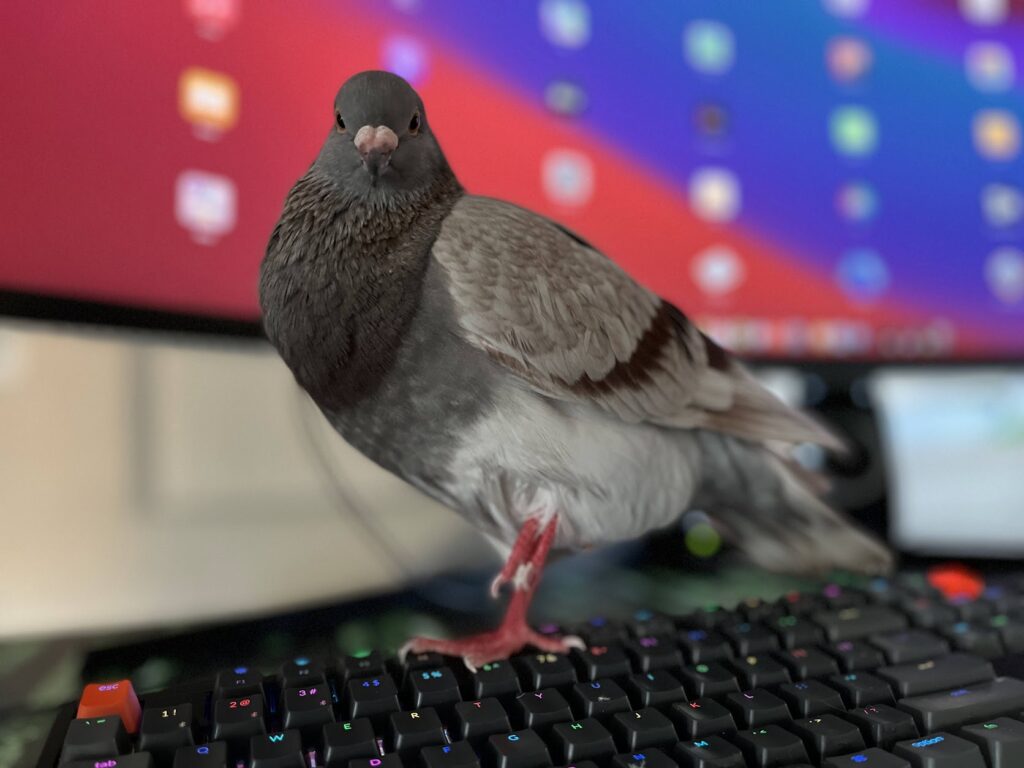
Theories on why pigeons stand on one leg
Theory 1: Heat conservation
One theory as to why pigeons stand on one leg is that it helps them prevent unnecessary heat loss and conserve energy.
Pigeons have a high metabolism, which means they need to burn a lot of calories just to stay warm and function properly. When it’s cold outside, they have to work extra hard to keep their bodies at the right temperature.
One way they can do this is by standing on one leg and tucking the other leg under their bodies. This reduces their surface area and minimizes heat loss. It’s kind of like how we might curl up under a blanket on a cold day to stay warm.
There is some scientific evidence to support this theory. Studies have shown that pigeons standing on two legs have colder blood than those who stand on one leg. This suggests that standing on one leg could be a way for these birds to conserve as much heat as possible in a cold environment.
In addition, studies have shown that the body temperature of pigeons decreases as the environmental temperature decreases. This means that as it gets colder, pigeons need to work harder to keep their bodies warm.
By standing on one leg, they can reduce the amount of heat lost through their bodies and conserve as much heat as possible.
So if you ever see a pigeon standing on one leg, it could be that they’re just trying to stay warm and conserve energy. It’s a smart adaptation that helps them survive in cold weather!
Check related articles:
- Do Pigeons Explode When They Eat Rice?
- Why Do Pigeons Bob Their Head?
- 30 Facts About Pigeons
- What To Do With Eggs My Pet Pigeon Layed
- 11 Myths About Pigeons
Theory 2: Predatory vigilance
The second theory as to why pigeons stand on just one leg is that it allows them to keep a better lookout for predators.
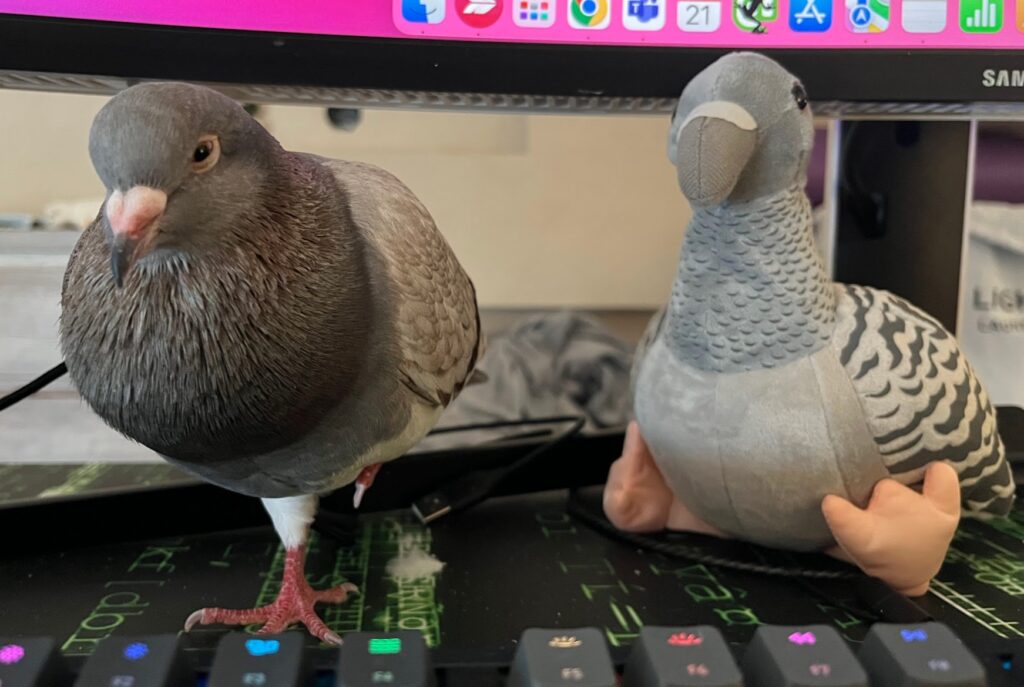
Pigeons are prey animals, and they are constantly on the lookout for danger. By standing on one leg, they can keep a better eye on their surroundings and be more alert to potential threats.
There is some scientific evidence to support this theory. Studies have shown that pigeons standing on one leg are more alert and responsive to potential predators than those standing on two legs. They are also more likely to take off and fly away when they sense danger.
It’s worth noting that this theory doesn’t necessarily contradict the theory of heat conservation. It’s possible that standing on one leg serves multiple purposes for pigeons. It could help them stay warm and conserve energy while also keeping a lookout for predators.
Overall, the predatory vigilance theory seems to be a strong possibility for why pigeons stand on one leg. It’s a smart adaptation that helps these birds stay safe and avoid danger.
Theory 3: Natural posture
The third theory as to why pigeons and other birds stand on one leg is that it is simply a natural posture for these birds.
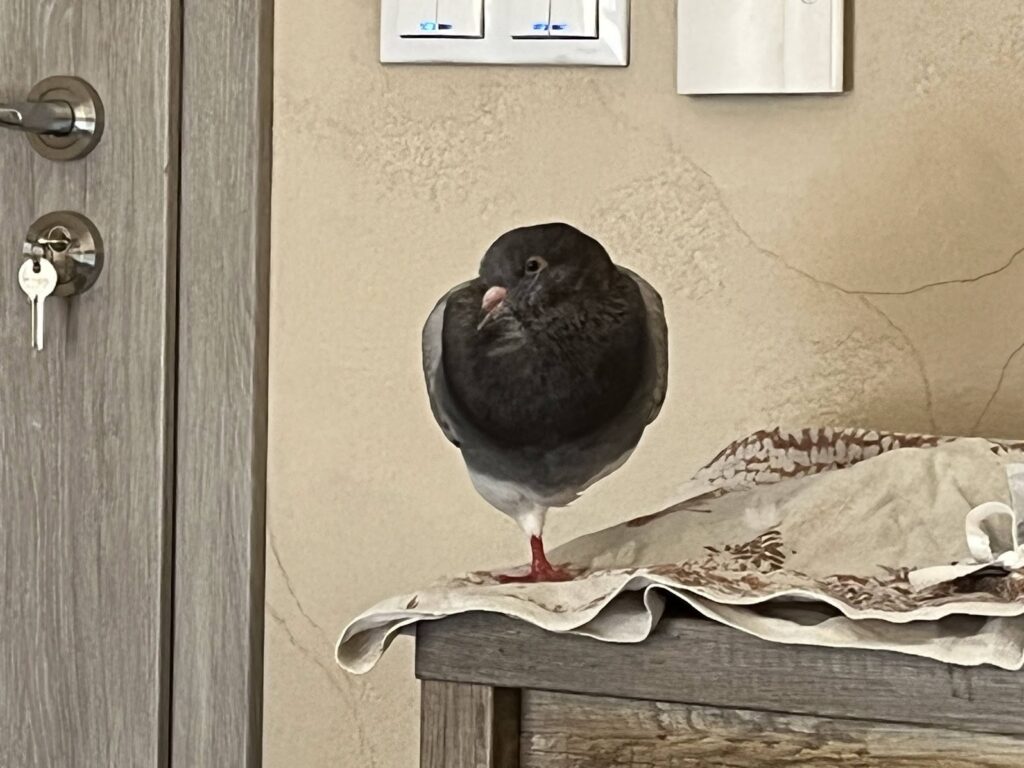
Pigeons have strong leg muscles and are able to balance on a single leg for extended periods of time without difficulty. It is possible that standing on one leg is simply a comfortable and natural position for them.
This theory is supported by the fact that many birds stand on one leg on rare occasions. While it is more common in pigeons, other birds such as flamingos and herons are also known to stand on one leg for long periods of time.
One possible reason for this behavior is that standing on one leg can help reduce muscle fatigue. When a bird’s feet are tucked under its body, the muscles in its legs are not bearing as much weight. This can help prevent muscle fatigue (or at least it reduces muscle fatigue) and allow the bird to stand for long periods of time.
There is also some scientific evidence to support this theory. Studies have found that birds standing on one leg have less muscle activity in their legs compared to those standing on two legs. This suggests that standing on one leg may be a more energy-efficient position for birds.
Overall, the theory that standing on one leg is a natural posture for birds seems to be a strong possibility.
Whether they are trying to manage heat loss (or minimize heat loss), keep a lookout for predators, or simply find a comfortable position, it is clear that standing on one leg is an important and fascinating behavior in the lives of these birds.
I love it when my pigeon is standing on one leg
Observing my pigeon Gerard when he stands on one foot is a truly lovely sight. His body is so graceful and balanced, and it’s amazing to watch him hold that position for such a long time. I can’t help but feel a sense of pride and admiration for him as he stands there, so dignified and self-assured.
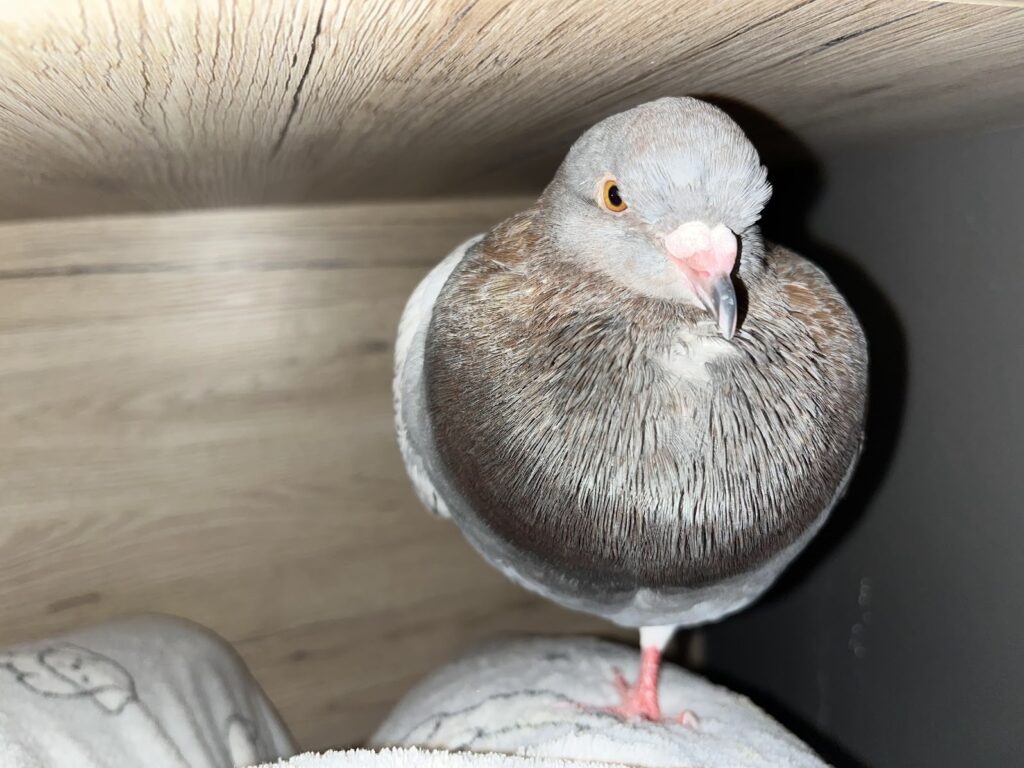
It’s one of my favorite things about him and I always take a moment to appreciate it whenever I see him standing on one leg. It’s interesting to note that when Gerard stands on one foot, he uses half the amount of energy that he would if he were standing on both feet.
This is because he is able to tuck the other foot under his body, which helps to keep his warm blood close to his body and reduce heat loss. It’s just one of the many things that make Gerard such a special and beloved member of our family.
Frequently asked questions about pigeons standing on one leg
Why do pigeons stand on one leg?
There are several theories as to why pigeons stand on one leg, including heat conservation, predatory vigilance, and natural posture. It is likely that there are multiple reasons for this behavior and that it serves different purposes for different birds in different situations.
Do all pigeons stand on one leg?
Not all pigeons stand on one leg, but it is a common behavior that is observed in many species of birds.
Is standing on one leg painful for pigeons?
There is no evidence to suggest that standing on one leg is painful for pigeons. These birds have strong leg muscles and are able to balance on one leg for extended periods of time without difficulty.
Can pigeons stand on one leg for long periods of time?
Yes, pigeons are able to stand on one leg for extended periods of time. It is a common behavior that is observed in many species of birds.
Do pigeons switch legs while standing on one leg?
Pigeons are known to sometimes switch legs while standing on one leg, but it is not clear whether they have a preference for standing on one leg over the other or whether they keep standing on the same leg. Some studies have found that pigeons tend to switch legs more frequently when it is colder, possibly as a way to distribute weight and reduce muscle fatigue.
Do other birds stand on one leg?
While it is more common in pigeons, other birds such as flamingos and herons are also known to stand on one leg for long periods of time. Standing on one leg is a behavior that is observed in many species of birds.
Final thoughts
In conclusion, the reasons why pigeons stand on one leg are likely to be varied and multifaceted. It is possible that this behavior serves different purposes for different birds in different situations. Some theories, such as heat conservation and predatory vigilance, have strong scientific support, while others, such as natural posture, are less well understood.
Further research is needed to fully understand this behavior and its importance in the lives of these fascinating birds. In the meantime, it is clear that standing on one leg is an important and intriguing behavior that is worth studying and understanding.
It is worth noting that standing on one leg is not the only way that pigeons regulate their body temperature. These birds also have other mechanisms for staying warm, such as fluffing out their body feathers to create extra insulation or tucking one leg under their bodies to keep warm blood close to their bodies. Pigeons may also enter a half-awake sleep state, known as slow wave sleep, where they tuck one leg under their bodies and ruffle their feathers to conserve heat.
Overall, it is clear that pigeons are intelligent and adaptable animals that have developed a range of behaviors to help them survive and thrive in their environments. Standing on one leg is just one of the many ways they do this.

